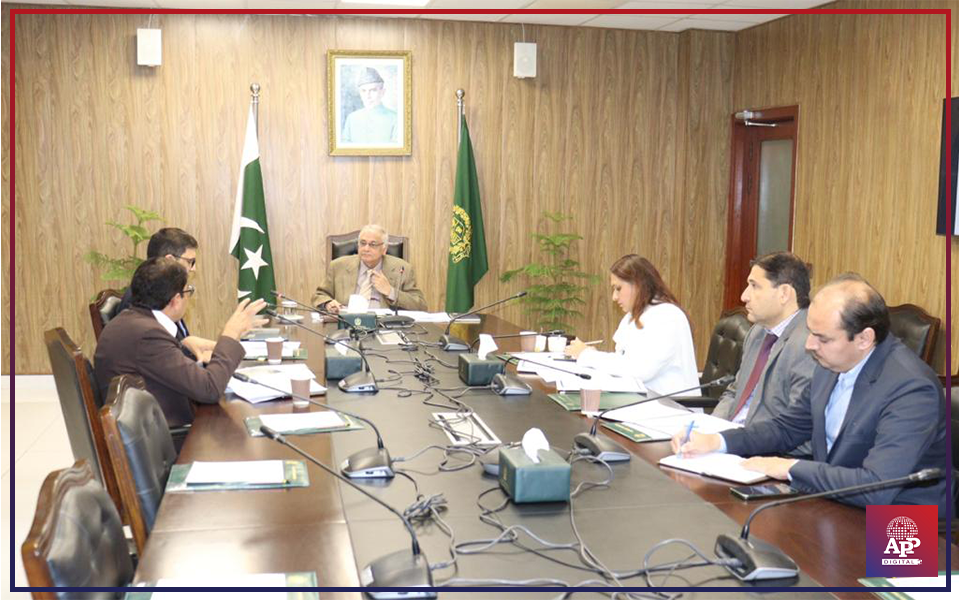Planning Minister reviews progress on National Water Policy
ISLAMABAD, Nov 30 (APP):The caretaker Minister for Planning Development and Special Initiatives, Muhammad Sami Saeed here on Thursday chaired a meeting to review progress on the Water Resource Sector and implementation status of the National Water Policy framework.
The meeting was attended by Member Infrastructure, Chief Water Resources and other relevant stakeholders, according to press statement issue by the ministry.
During the meeting a comprehensive briefing was given to the minister over Indus Basin Irrigation System (IBIS), availability of water in the system, total sectoral water demand and challenges faced by the system due to population growth and inefficient utilization of water resources
In addition, salient features of National Water Policy 2018, its strategic priorities and national targets set for 2023 were also discussed.
During the meeting, it was informed that IBIS is the fourth largest Irrigation Network in the world. About 20.2 million hectares of land is cultivated through annual flows of 138.4 MAF in Pakistan.
Pakistan has 6668 glaciers more than any country, anywhere on Earth while groundwater contribution is about 50 MAF. The Agriculture Sector is the major user of available water, 94% of irrigation water is utilized by the agriculture sector whereas domestic use is 5.2 and Industrial use is 0.8 percent.
Furthermore, it was further informed that in order to cope with the challenges of water resources and climate threats, the first ever National Policy was developed and approved by the Council for Common Interest (CCI) in 2018.
The strategic priorities of the policy are Conservation and Efficiency, Storages, Renewable Energy, IWRM and Regulatory Frameworks, the statement added.
It was informed that out of 6 Planning Principles of policy, the key principle is “Equity and participatory decision-making; Water sector activities shall be participatory and consultative at each level and decisions will be taken by consensus.”
The water Resource section highlighted the main targets of policy set for 2023 is increasing water use efficiency by 30%, reduce conveyance loss by 33% (Saving about 15 MAF), increase surface water storage by 10 MAF along with replacement of decade old infrastructure, improved Water Accounting, Mechanism for data collection.




